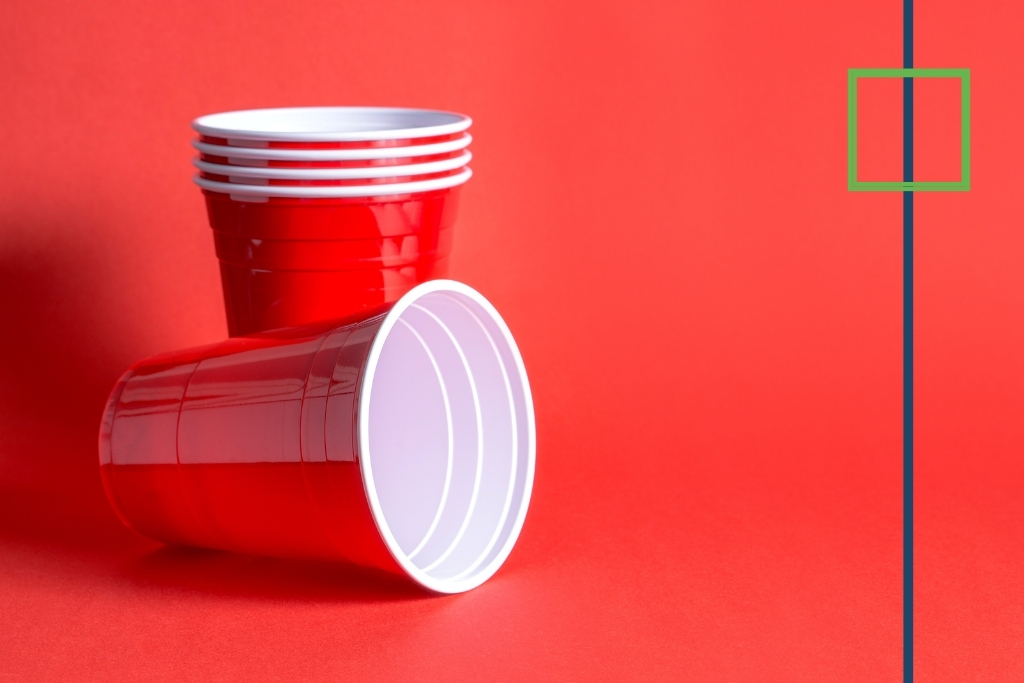How Much Alcohol Causes Cirrhosis?
Heavy, regular, long-term drinkers are much more likely to develop alcoholic cirrhosis, compared with other, healthy people. Generally, heavy drinking needs to be sustained for at least 10 years for alcoholic cirrhosis symptoms to develop.
There are generally three stages of alcohol-induced liver disease:
- Fatty liver: This involves a build-up of fat in the liver.
- Alcoholic hepatitis: This occurs when the cells of the liver swell.
- Approximately 10 to 15 percent of heavy drinkers will subsequently develop cirrhosis.


Get Your Life Back
Find Hope & Recovery. Get Safe Comfortable Detox, Addiction Rehab & Mental Health Dual Diagnosis High-Quality Care at the We Level Up Treatment Centers Network.
Hotline (877) 378-4154So, how much alcohol causes cirrhosis? There are basically two main factors to consider: the number of years you have been drinking and the amount of alcohol you ingest. In men, risks for the condition normally show when habitual daily alcohol intake meets or exceeds a threshold of roughly 40 grams. This is the equivalent of:
- Two to eight 12-oz servings of beer (depending on alcohol content)
- Three to six glasses of wine (again, depending on alcohol content)
- Three to six shots of distilled liquor (depending on alcohol content or proof)
In women, risks for alcoholic cirrhosis occur when habitual daily intake meets or exceeds a much lower threshold of 20 grams of alcohol. It may take time to develop the types of serious liver damage that characterize alcoholic cirrhosis.
Professional alcohol abuse treatment should be sought long before these effects happen. Men and women must generally maintain their ongoing habit of excessive daily consumption for at least a decade before they trigger the onset of the condition.
Despite these available data, it’s crucial to mention that no one can tell you in advance how long, or how much alcohol causes cirrhosis. In individuals who drink in excessive amounts for two decades or longer, the chances of developing the disease are roughly 50/50.
Understanding Alcoholic Cirrhosis
Cirrhosis occurs whenever scar tissue replaces healthy, functional cells inside your liver. Although this process has many possible sources, excessive drinking is one of its primary causes. That’s because ongoing exposure to large amounts of alcohol directly damages your liver, the organ responsible for breaking down liquor, and a broad range of other substances that have a toxic effect on your body. Severe cirrhosis can progress to liver failure, a major loss of function in the organ that can kill you unless you receive a timely transplant [1].
Get Help. Get Better. Get Your Life Back.
Searching for Accredited Drug & Alcohol Rehab Centers Near You? Or Mental Health Support?
Even if you have failed previously, relapsed, or are in a difficult crisis, we stand ready to support you. Our trusted behavioral health specialists will not give up on you. Call us when you feel ready or want someone to speak to about therapy alternatives to change your life. Even if we cannot assist you, we will lead you wherever you can get support. There is no obligation. Call our hotline today.
FREE Addiction Hotline – Call 24/7Alcohol and Liver Damage
Alcohol-related liver disease is liver damage caused by drinking too much alcohol for a long time.
Typically, the amount of alcohol ingested (how often, how much, and for how long) defines the severity and risk of liver damage.
Alcohol liver damage symptoms range from none at first to jaundice, fever, fatigue, and a painful, tender, and enlarged liver, then to more severe problems such as bleeding in the digestive tract and deterioration of brain function.
To identify whether drinking is a problem, medical professionals may give the person a questionnaire and ask family members how much the person drinks.
If individuals who have been drinking in excess have symptoms of liver disease, medical professionals do blood tests to assess the liver and sometimes do a liver biopsy.
The best treatment is to stop drinking alcohol, but doing so is very difficult and requires help, often in rehabilitation programs.
Approximately 8.5% of adults in the United States are estimated to have alcohol use disorder in any given year. About twice as many men as women abuse alcohol.
After being absorbed in the digestive tract, most alcohol is processed (metabolized) in the liver. As alcohol is metabolized, chemicals that can cause harm to the liver are produced. The more alcohol someone drinks, the greater the injury to the liver. When alcohol impairs the liver, the liver can continue to work for a while because the liver can sometimes recover from mild injury.
The liver can function normally even when about 80% of it is damaged. However, if individuals continue to consume alcohol, liver damage progresses and may eventually result in death. If individuals stop drinking, some damage may be reversed. Such individuals are likely to live longer.
How Alcohol Affects the Liver?
Alcohol abuse may cause three types of liver damage, which usually develop in the following order:
- Accumulation of fat (fatty liver, or hepatic steatosis): This type is the least serious and can sometimes be reversed. It happens in more than 90% of people who drink too much alcohol.
- Inflammation (alcoholic hepatitis): The liver becomes inflamed in about 10 to 35% of individuals.
- Cirrhosis: About 10 to 20% of individuals develop cirrhosis. In cirrhosis, a large amount of normal liver tissue is permanently replaced with scar tissue (called fibrosis), which performs no function. As a result, the internal structure of the liver is disrupted, and the liver can no longer function normally. Eventually, the liver usually shrinks. People may have a few symptoms or the same symptoms as those due to alcoholic hepatitis. Cirrhosis cannot be reversed [2].

Comfortable Facilities & Amenities
High-Quality Addiction & Mental Health Rehabilitation Treatment
Rehab Centers TourRenowned Addiction Centers. Serene Private Facilities. Inpatient rehab programs vary.
Addiction Helpline (877) 378-4154Proven recovery success experience, backed by a Team w/ History of:
15+
Years of Unified Experience
100s
5-Star Reviews Across Our Centers
10K
Recovery Success Stories Across Our Network
- Low Patient to Therapist Ratio
- Onsite Medical Detox Center
- Comprehensive Dual-Diagnosis Treatment
- Complimentary Family & Alumni Programs
- Coaching, Recovery & Personal Development Events
Cirrhosis can cause the following serious complications:
- Ascites: Fluid may accumulate in the abdomen, causing swelling.
- Hepatic (portosystemic) encephalopathy: Brain function may deteriorate because the damaged liver cannot remove toxic waste products from the blood. People may become tired and confused.
- Portal hypertension: The vein that brings blood to the liver may be narrowed or blocked, increasing blood pressure in that vein. Portal hypertension causes or contributes to ascites, bleeding in the digestive tract, an enlarged spleen (splenomegaly), and sometimes portosystemic encephalopathy.
- Bleeding in the digestive tract: Veins in the esophagus and stomach may enlarge and bleed because of portal hypertension. As a result, people may vomit blood or have bloody or dark, tarry stools.
- Liver failure: The liver becomes less and less able to function, resulting in many complications and generally failing health. Liver failure can eventually lead to kidney failure.
- Bleeding disorder: People tend to bleed and bruise more quickly because the damaged liver does not produce enough substances that make blood clots (coagulate). Also, alcohol can reduce the number or activity of platelets, which also help blood clot. Portal hypertension leads to an enlarged spleen, decreasing the number of platelets.
- Enlarged spleen: Portal hypertension causes the spleen to enlarge (a condition called splenomegaly). The enlarged spleen traps and destroys more white blood cells and platelets than it usually does. As a result, the risk of infections and bleeding is increased.
Who Gets Cirrhosis?
Cirrhosis is one of the most severe potential outcomes of a prolonged pattern of excessive drinking. In fact, you can easily die from advanced forms of this alcohol liver damage. If you drink regularly, you may want to know the alcoholic cirrhosis symptoms and how much alcohol causes cirrhosis. Researchers can answer this question generally, but no one knows for sure how much drinking is required to trigger the disease.
Alcoholic liver disease (ALD)—and particularly alcoholic cirrhosis—has long been one of the most prevalent and devastating conditions caused by alcohol consumption and is one of the leading causes of alcohol-related death. Liver cirrhosis is the 12th leading cause of death in the United States [4]. Approximately 35 to 40 percent of alcoholic patients may progress from steatosis to fibrosis, characterized by increased deposition of extracellular matrix proteins, such as collagen, in the liver along with inflammation and, eventually, alcoholic cirrhosis. Diagnosing the stage of the disease is important for the management and treatment of alcoholic liver disease.
What are the Symptoms of Alcoholic Liver Cirrhosis?
Symptoms of alcoholic liver cirrhosis include:
- Losing muscle tone (atrophy)
- Bruising easily
- Loss of appetite and weight loss
- Yellowing of the skin and eyes (jaundice)
- Fluid build-up and swelling of the legs (edema) and abdomen (ascites)
- Bleeding in your mouth (mouth bleeds) or vomiting blood
- Patchy red skin on the palms of your hands (erythema)
- Confusion, memory loss, poor concentration, and mental fog
World-class, Accredited, 5-Star Reviewed, Effective Addiction & Mental Health Programs. Complete Behavioral Health Inpatient Rehab, Detox plus Co-occuring Disorders Therapy.
CALL (877) 378-4154End the Addiction Pain. End the Emotional Rollercoaster. Get Your Life Back. Start Drug, Alcohol & Dual Diagnosis Mental Health Treatment Now. Get Free No-obligation Guidance by Substance Abuse Specialists Who Understand Addiction & Mental Health Recovery & Know How to Help.
Benefits of Giving Up Alcohol
You might be wondering what happens when you give up alcohol? Or maybe you’ve asked yourself or researched how to reduce alcohol consumption safely. Having a conscious decision to quit drinking alcohol involves making some significant changes in your life. If the hobbies and social activities you often partake in typically involve alcohol, you may have to give them up or perhaps replace them with non-alcohol-related pastimes. Across the board, a sober life has a wide array of benefits, including improved mental and physical health. Quitting alcohol may even reverse some of the alcohol’s damage to your body. However, quitting alcohol is a process that requires intentional strategies to eliminate it from your life.
Find the Right Treatment at We Level Up Inpatient Rehab New Jersey
If you’re looking for long-term solutions to staying sober, the alcohol rehab treatment at We Level Up NJ may be able to help. Learn how to reduce alcohol consumption safely. Trusted detox and rehab facilities might actually be the safest place for someone with a substance use disorder right now. Get started at the ideal location during the ideal time to get sober. Contact We Level Up NJ today.
How We Can Help? Searched for “Dual Diagnosis Programs in New Jersey” or are you seeking a national inpatient rehab destination?
Now that we’ve answered the question, how much alcohol causes cirrhosis? It will give us a new view and perspective on how to deal with individuals struggling with alcohol use disorder. If you or someone you love is struggling with alcoholism, get them the safest help they need and deserve. We Level Up NJ offers a safe and medically assisted Dual Diagnosis Alcohol and Mental Health Disorder Treatment. Contact our team today!

Experience Transformative Recovery at the We Level Up Treatment Center.
See our authentic success stories. Get inspired. Get the help you deserve.



Start a New Life
Begin with a free call to an addiction & behavioral health treatment advisor. Learn more about our dual-diagnosis programs. The We Level Up treatment center network delivers various recovery programs at each treatment facility. Call to learn more.
- Personalized Care
- Caring Accountable Staff
- Comfortable Amenities
- Licensed & Accredited
- Renowned w/ 5-Star Reviews
We’ll Call You
Sources:
[1] NIAAA – https://pubs.niaaa.nih.gov/publications/arh40/87-96.htm
[2] NCBI – https://www.ncbi.nlm.nih.gov/books/NBK546632/#:~:text=The%20cardinal%20sign%20is%20the,liver%20is%20enlarged%20and%20tender.
[3] NCBI – https://www.ncbi.nlm.nih.gov/books/NBK482419/
[4] CDC – https://ftp.cdc.gov/pub/Health_Statistics/NCHS/NHIS/SHS/2018_SHS_Table_A-4.pdf